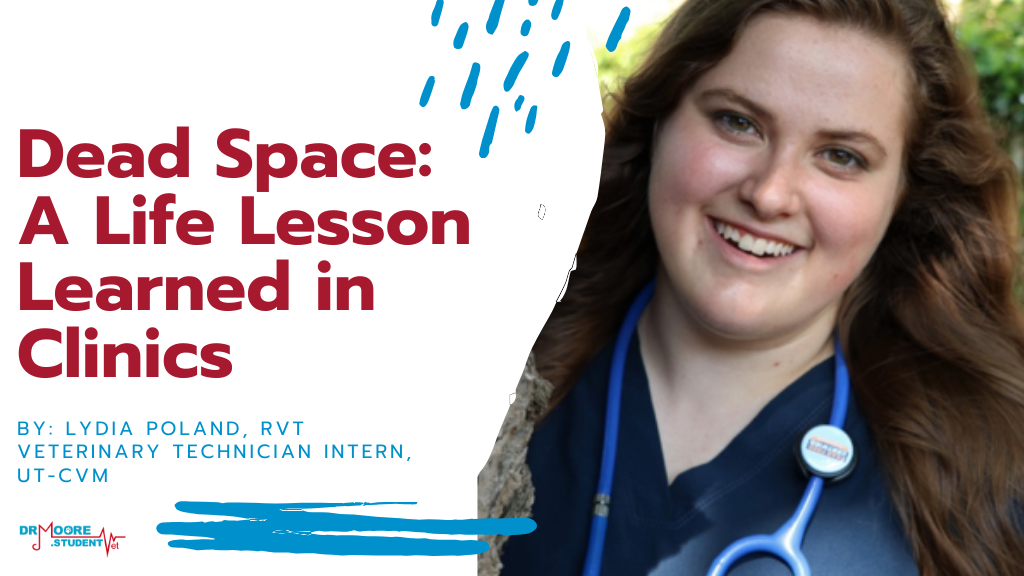Dead Space: A Life Lesson Learned in Clinics

Sometimes I wonder how random items make it into my pocket at the end of the workday. This week it was about two inches of an endotracheal tube that I pulled out of my pocket. I let it hover over the trash can for a second, but then I set it on my dresser. While I am notorious for not letting junk go when I need to, it was a strange thing even for me to keep. A few hours later, I walked by and picked it up again.
Dead space.
Those two words repeated in my head several times while I turned the small piece of plastic over in my hands. Dead space is a term used to describe any area of the patient’s anatomy or the anesthetic breathing circuit in which no gas exchange happens. Air is flowing in and out, but nothing very beneficial is coming from it other than getting the oxygen and carbon dioxide where they need to go to do the essential things. If there is too much dead space, it is impossible to fully expire the Co2, thus causing the patient to be hypercapnic and possibly acidotic.
Dead space terrifies me.
In the literal sense, I had it drilled into my brain in school. Measure your endotracheal tubes, choose the correct anesthesia machine with the right tubing, even think about a main-stream versus a side-stream EtCO2 monitor for tiny patients. Always decrease dead space as much as possible.
In a figurative sense, I have a fear of my life getting stuck in dead space. As a rotating technician intern, I’m forced outside of my comfort zone about every two weeks when I start a new rotation. I would just get comfortable in radiology, and the next week I’d be vaccinating tigers.
Looming ahead on my schedule was my most dreaded rotation…
Anesthesia.
I love excitement, I love being kept on my toes, I love the adrenaline of emergency medicine, and I love learning from the difficult cases. But for some reason, anesthesia summons a different kind of adrenaline and stress response in me. Let’s put it this way: since starting this internship in June, I had cried a total of once, and that was because of the traumatic death of one of my patients. In my first week of anesthesia, I cried twice. I kept telling myself it would get better, that I was still learning, and this phase of my life wouldn’t last forever. I would rally myself right as a new case would present with some insane complication, or some miscommunication would send me reeling again. For the first time, I thought about quitting my internship. I could be making a lot more money and not have to deal with anesthetizing such critical cases if I just left and went to private practice. But then I picked up a small piece of tubing and remembered my fear of dead space.
I don’t want to be moving ritualistically through my day without being changed. It doesn’t matter if I’m in a spay/neuter clinic or academia or a specialty practice, there will always be things that scare me, and there will always be ways for me to learn and grow through those difficulties. I’m choosing to see my anesthesia rotation, as much as it still terrifies me, as a little clip off of the endotracheal tube of my life. Clumsy and uncomfortable, yes, and maybe not the smooth induction that I would have preferred but necessary for getting rid of that stagnant air and blowing off my toxic complacency. Because in the end, while dead space may be an easier place to hang out, it can be fatal.
No matter what challenges you face, do what scares you. Learn something new, try a different technique, ask for the raise or promotion you deserve, go the national conferences and meet new people, make connections, read a book about your interests, write articles, go for a specialty.
Take a big breath of fresh air.
Always decrease your dead space.
Lydia Poland, RVT
———————————————————————–
Lydia is a 2019 graduate of Blue Ridge Community College in Weyers Cave, Virginia, and is currently completing a rotating veterinary technician internship at the University of Tennessee, College of Veterinary Medicine. Her professional interests include small animal Emergency & Critical Care and Behavior. Outside of work, she enjoys reading, writing, knitting, singing, and going anywhere where her dogs are allowed.

Leave A Comment